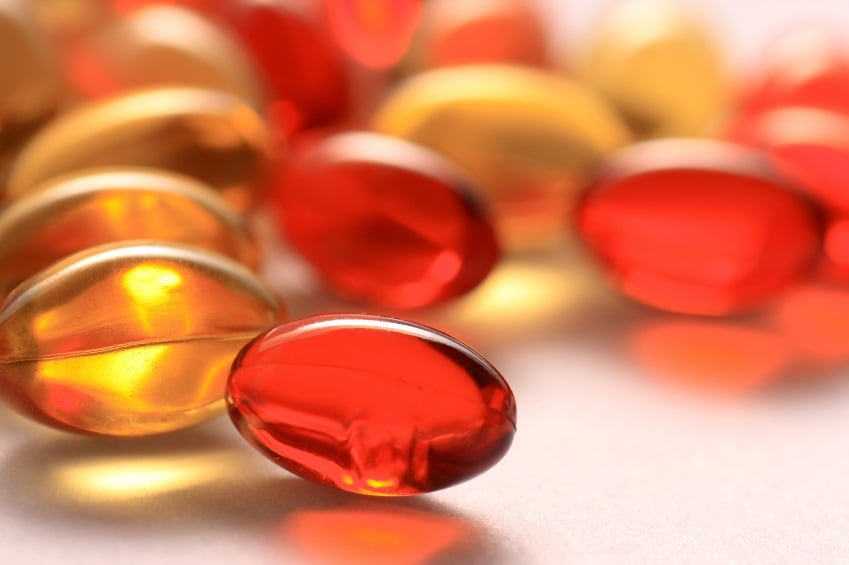Scientists from the University of Southampton report that, overall, no significant differences were observed between the various forms over 12 weeks of supplementation. Nor were there any significant differences between men and women, they reported in the British Journal of Nutrition.
“[T]these findings show that in healthy individuals neither the lipid structure nor the overall fatty acid composition of supplements that contained EPA and DHA significantly influence their bioavailability during dietary supplementation, despite the apparently lower postprandial bioavailability of EPA +DHA EE [ethyl esters] compared with TAG [triglycerides] or FFA [free fatty acids],” wrote the researchers.
“One possible explanation is that any postprandial variation in EPA and DHA bioavailability is lost during longer-term supplementation. Furthermore, there were, at most, small effects of sex on the incorporation of EPA into plasma lipids, which is in agreement with the findings of previous studies.
“One implication of these findings is that choice of the lipid structure of EPA and DHA is not a primary consideration in the design of interventions to improve EPA and DHA status of healthy adults.”
“They're all good”
Commenting independently on the study, Harry Rice, PhD, VP of regulatory & scientific affairs for the Global Organization for EPA and DHA Omega-3s (GOED), told us: “In the absence of eating fatty fish on a regular basis (2x/week), you should choose a supplement and take it consistently as part of a healthy lifestyle. Don't spend too much time thinking about which omega-3 form is best. They're all good and people don't get enough EPA and DHA. In order to supply the "optimal" amount to everyone, the demand on supply will increase, so all forms are going to be needed.”
Superiority

The question of a potential superiority between the omega-3 forms is a relatively recent debate. Several studies have examined if there are differences in bioavailability between, for example, fish oil with omega-3s in the triglyceride or ethyl ester forms, and krill oil with omega-3s in the phospholipid form. A recent study from scientists at DSM found no differences in blood levels of omega-3 after consuming equal doses of fish oil or krill oil (Lipids in Health & Disease, 2015, 14:99).
Such studies have received criticism from some industry stakeholders. Nils Hoem, chief scientist at krill oil supplier Aker BioMarine Antarctic AS, for example, told us last year that omega-3 bioavailability studies are a waste of time, and said that the fundamental question is how the EPA and DHA are taken up.
“EPA and DHA don’t have their actions in the blood stream,” said Dr Hoem. “Their activity comes when they are incorporated into the membranes, or in the membranes of the organs, or when transported into the brain. The tissue is the issue.”
Study details
The University of Southampton researchers performed two studies. The first involved nine healthy men in a postprandial cross-over study design. The men were randomly assigned to consume supplements containing 1.1 grams of EPA plus 0.37 grams of DHA as unmodified fish oil triglycerides, re-esterified triglycerides, free fatty acids or ethyl esters. The second study included healthy men and women in a parallel design supplementation study. The participants consumed one supplement type for 12 weeks.
Results showed, in both studies, EPA and DHA was preferentially incorporated into plasma phosphatidylcholine ahead of plasma triglycerides and non-esterified fatty acids.
“The overall findings of this research are that the lipid structure of ingested EPA and DHA has, at most, a limited effect on the incorporation of these fatty acids into blood lipids during the postprandial period and during 12 weeks of dietary supplementation,” wrote the researchers. “In addition, the incorporation of EPA and DHA into blood lipids during dietary supplementation did not differ between men and women.”
Source: British Journal of Nutrition
Published online ahead of print, doi: 10.1017/S0007114516002713
“Lipid structure does not modify incorporation of EPA and DHA into blood lipids in healthy adults: a randomised-controlled trial”
Authors: A.L. West et al

